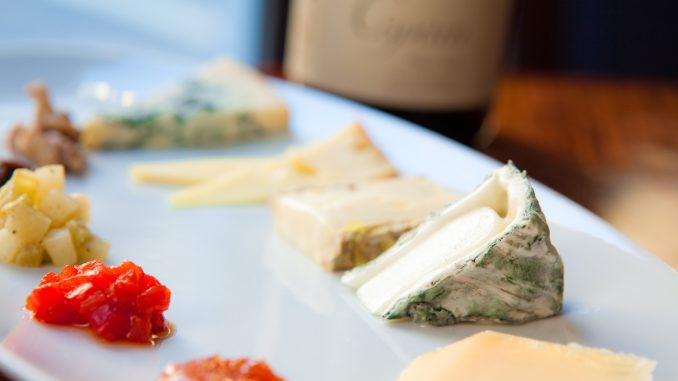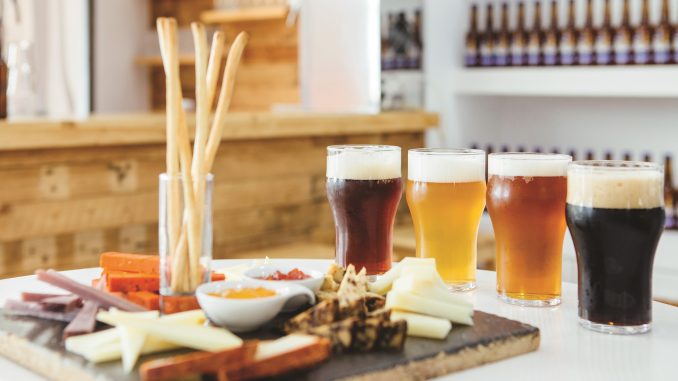Cheese Pairings Can Elevate Deli Offerings
June 1, 2019 | 5 min to read
Supermarket delis can enhance cheese offerings by pairing them with various foods and beverages, appealing to consumers for gatherings and at-home dining. Traditional pairings, especially cheese and wine, highlight regional connections, like Italian Chianti with Asiago or French Beaujolais with Brie, showcasing local heritage. This age of cheese exploration invites enthusiasts to experiment and savor the rich history and variety that each pairing brings, rooted in the cultural practices of food preservation and sharing.

Cheese profiles in the supermarket deli can be elevated by pairing fromage with a variety of foods and beverages to enhance their profile at the store level. This provides consumers with options for their party planning or nights at home, which are increasingly including specialty cheese.
In this ‘Age’ of “anything is possible” cheese lovers have a lot to look forward to when selecting pairings.
But first let’s start with the most traditional of pairings: cheese and wine. Historically, cheese was often served with locally-produced wines of the geographic region. Throughout ancient Europe, cheese became a fundamental part of many local villager’s diets. With the addition of bread, a filling meal could be savored along with a beverage produced from local grape vineyards or orchards. Industrious people used what they had to survive, wasting little in efforts to preserve and sustain foods during sparse times. Cheesemaking was a method of preserving milk while crushing grapes or apples for their juice. Essentially, cheese and wine were very often produced within the same regional area or farm. Families passed down their cheesemaking recipes spanning generations, creating the many varieties we enjoy today.
For example in Italy, an Italian Chianti or Brunello wine might be offered with Asiago cheese, which originated in the same region. A sparkling red Lambrusco from the same area as Parmigiana Reggiano is an equally delicious pairing. Or in France, it might be surprising to learn that Beaujolais and Brie cheese is produced in the same vicinity. Although considered quite a tannic wine, Beaujolais has been a popular match alongside Brie cheese for centuries.

Appropriate Accompaniments
Science studies claim that fatty, creamy foods combined or paired with astringent foods create a pleasant taste sensation. These opposites “attract” so-to-speak, developing a pleasing taste profile on the palate. Some hold fast to the belief that bold and robust flavors go well together, while the same holds true for lighter flavors.
Michael Cervin, professional wine and spirits judge as well as author of “California Wine Country”, and noted wine columnist, also thinks that the more acidity in the wine, the better it works with the fat in the cheese, though years of experience has sharpened his perspective on the subject. “Most folks in the wine industry espouse the idea that white wines are better matches due to the reduced tannins and greater acidity over red wines. I could not disagree more. Sure acidity plays a crucial role depending on a cheese’s fat content, but plenty of red wines have high acidity and most red wines are not typically overly tannic to begin with,” says Cervin.
He recommends matching the intensity of the wine with the intensity of the cheese, emphasizing that a bold cheese with a weak wine won’t work. “The bottom line is if you like a wine and cheese that go together, then that is all that matters. Never let anyone tell you that you’re making a mistake or that your choices aren’t viable,” Cervin advises.
Wine might be the most popular pairing with cheese as evidenced by history, but it certainly isn’t the only beverage or food paired with cheese in a more contemporary world filled with choices that now reach beyond the boundaries of regional tried and true options for pairings. It’s all about the cheese, though, bringing out nuances of flavor and finding the perfect match for that ‘mouth-feel’.
Supermarket delis can learn from restaurants that focus on cheese pairings. Bradley Frank, cheesemonger for SHED Restaurant, headquartered in Healdsburg, CA, which sits in the middle of Sonoma County wine country, finds that people are becoming more inquisitive with their selections. “I think that the more obscure and unique pairings that are unexpected and actually taste delicious and texturally work are attractive to both seasoned adventurous cheese eaters as well as new, curious consumer palates.”
Frank, who carries dozens of cheese selections produced in California, and an inexhaustible supply of unique local foods to browse over for developing pairings at the SHED, emphasizes “the challenge when creating a pairing is in ALWAYS maintaining the cheeses integrity on its own merit and not taking from the cheeses’ original flavors.”
Bradley Franks shares some of his favorite pairings and accompaniments created from local Northern California producers of specialty foods and cheeses.
Cheesemaker Soyoung Scanlan’s Andante’s Pianoforte drizzled with Pinecone Bud Syrup. The herbaceous sweet syrup goes well with the mushroomy lactic flavors in this St. Marcellin-style cheese. For a unique tasting, warm the cheese (in the crock it comes in) in the oven briefly and add some sugar to the syrup to give it a brûlée finish.
Audrey Ramini’s Buffalo Mozzarella with fresh strawberries, almonds and HomeFarm Olive Oil combines sweet, creamy, crunchy and nutty. This also pairs well with tomatoes come summer.
Valley Ford’s Grazin Girl with spicy pickles and SHED’s pickled carrots features the sweet, creamy Gorgonzola dolce-inspired Blue, which is well complemented by crunchy spicy pickled treats. It is best served with a thick toasted slice of country bread.
Bellwether Farms Basket Sheep Ricotta drizzled with SHED Sonoma wildflower honey and HomeFarm Olive Oil can also be served with a country loaf. The floral honey makes this an any time of day meal, snack or treat.

What’s Trending?
A welcoming attitude towards trying more varieties of cheeses has swept its way across the country. Cheesemongers are sourcing more local speciality products for curious cheese lovers seeking to pair some of their favorite foods or beverages with cheese. From the East to West Coasts and in between, more and more people seek cheese pairings to complement favored local beverages and foods. Many are noting out of the box trends evolving over the past several years. More and more customers are interested in cheese and cacao (chocolate) pairings. Cervin believes the days of a “cube of cheese and a glass of wine are long gone.” There’s much more to entice the palate with creative food options. He goes on to explain that layering of flavors and textural components makes any pairing more fun and possibly a bit complicated. For an example of more unique pairings, Cervin explains that “Many pairings these days are all about small bites, such as taking cheese but adding a protein for a pairing.” DB
14 of 15 article in DeliBusiness June/July 2019

